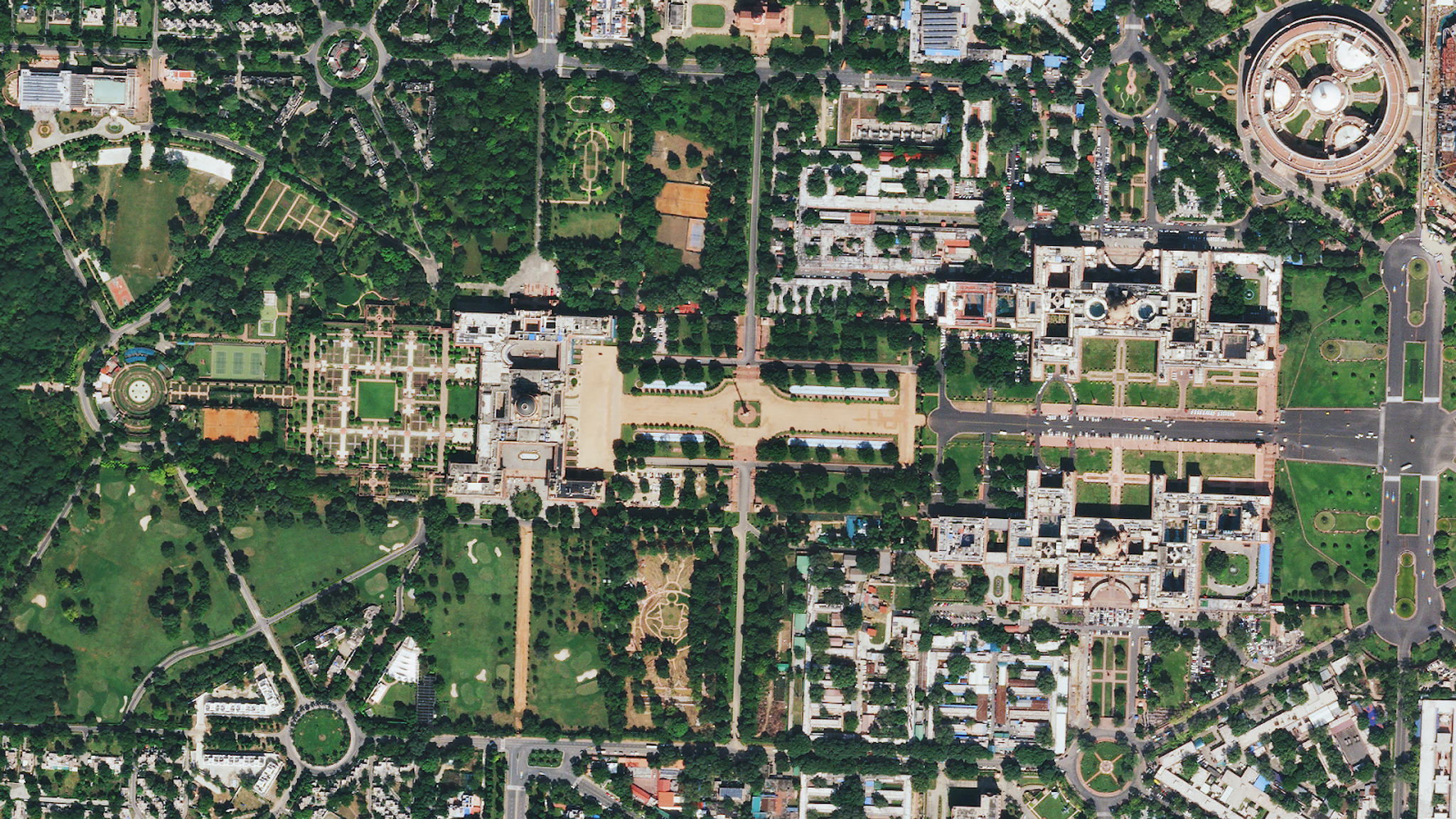At GeoSmart India 2022, Innovation and Integration are Seen as Essential to Growth

Planet SkySat image of Rashtrapati Bhavan, New Delhi, India taken October 21, 2021. © 2021, Planet Labs PBC. All Rights Reserved.
StoriesUnpack GeoSmart India 2022’s theme – #geospatialbydefault: empowering billions – and you’ll discover two things.
One, the promise of geospatial and earth observation systems is enormous, and growing all the time. New technologies for satellite image resolution, sensing, data collection, and data management are continuously advancing, making the current moment an incredibly exciting one for the industry.
Two, it’s important that these technologies be made more accessible and more impactful in the near term – but how?
Planeteers joined the annual event that brings together leaders from India's thriving GIS industry and the country’s various government agencies involved in technology and research to learn more about the potential geospatial technologies can deliver for organizations in India – and also to share their own capabilities and solutions for the Indian market.
Here are the key takeaways we heard from the 500 speakers and the 2,500 attendees at GeoSmart India:
The necessary evolution of geospatial solutions
In order to fulfill the potential of geospatial technologies – both as a business and as an agent for progress and problem-solving – the products have to evolve. They can’t merely remain siloed data resources; they must be integrated through structured data flows enabled by new interconnectivity.
“New trends in GIS are facilitating interconnectivity and integration of all types of data,” Agendra Kumar, Managing Director of ESRI India (a Planet partner), told attendees. “Geospatial apps are becoming pervasive, supporting many types of workflows and management.”
This evolution would also include democratization of data for academia and governments. As GeoSmart India 2022 keynote speaker Gajendra Singh Shekhawat, Minister of Jal Shakti, told attendees, “Nowadays, digital geospatial information provides far more value for societal, economic, and environmental use than just a simple map. It serves as an essential national information resource.”
The rise of India as a center of geospatial adoption
Recently, the Indian government has been focussed on digital transformation, including how it responds to the challenges of governing, collecting information, and providing services. India is also considering geospatial information adoption through regulations, standards, incentives to industry, and an integrated policy framework that is helping to liberalize the industry.
In addition, the Indian government has shown active support to geospatial infrastructure through the Indian Space Research Organization (ISRO), such as launching vehicles for deploying satellites.
Geospatial companies are innovating
“The advances in image resolution really wowed those we shared it with at GeoSmart India,” says Naveen Reddy, Planet Account Executive, who leads sales for South Asia. “It was great to learn about new survey equipment that uses drones and LiDAR, which now offer the greater precision needed by users. And remote sensing services coupled with AI and ML are just mind-blowing, pushing innovation and helping to set industry standards.”
Many more parts of the world need the benefits of geospatial technology
Governments and NGOs are committed to bringing the benefits of geospatial data to more citizens. Ultimately, the collective hope expressed at the show is that geospatial information expertise will help end-users respond to challenging issues such as overpopulation and poverty.
“We can empower billions, once we master the power of collaboration and collective problem-solving,” said Nadine Alameh, CEO and President of Open Geospatial Consortium. “Even though we are living in an amazing time for technology, we must not forget that billions of people in the world do not benefit from it.”
Planet’s presence
Our company hosted a 24 sqm booth and participated in a technical presentation that addressed how high-frequency satellite data can help the India government and private organizations manage infrastructure assessment, land use, project monitoring and evaluation, natural resource management and compliance, agricultural monitoring, and disaster impact assessment.
Planet APJ Team left to right: Naveen Reddy, Stephen Jenks, Janeth Fule & Partha Pratim Ghosh
Planet Dove satellite on display at GeoSmart India 2022 Conference.
Partha Pratim Ghosh delivering technical presentation | Leveraging Space Technology: Solutions and Applications Using Planet Satellite Data in India
“We had great interest from visitors curious to know more about our powerful imaging capabilities, and of course, we got to see the familiar faces of numerous Planet users from the Indian government and space agencies,” says Satish Raju Gottumukkala, Product Specialist, Planetary Variables at Planet. “Our satellite display left visitors amazed that so much sensing power could be packed into that small box.”

Ready to Get Started
Connect with a member of our Sales team. We'll help you find the right products and pricing for your needs

